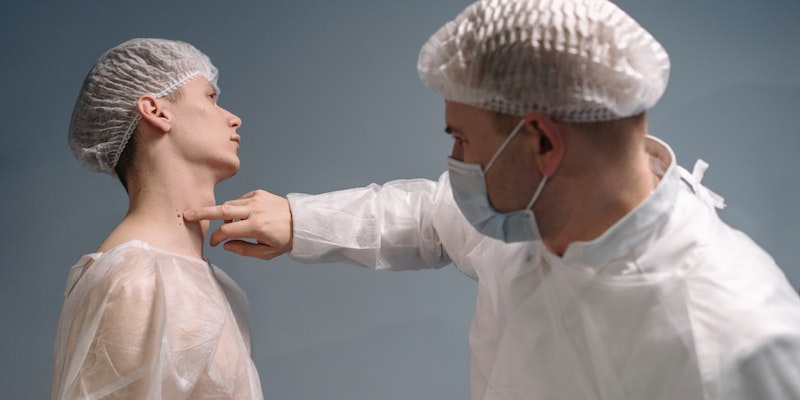Is Wearing Sunscreen Indoors Necessary?
Oct 02, 2023
Sunscreen has long been advocated as a vital component of skin health, predominantly for outdoor use. However, emerging evidence suggests the importance of wearing sunscreen even indoors.
What Is UV Spectrum?
Understanding the UV spectrum is crucial when addressing indoor sunscreen use. This section explains UV rays kinds and how they affect our daily lives, including our homes and offices.
Understanding UVA and UVB
Sunlight comprises different types of rays, the most significant being UVA and UVB. UVA rays account for 95% of the UV radiation that graces the Earth's surface. While UVB rays are notorious for causing sunburns, UVA rays are the silent agents that infiltrate more deeply into the skin. These rays are responsible for accelerating skin aging and are implicated in developing skin cancers. The distinction between these rays is crucial, especially when considering the necessity of wearing sunscreen indoors.
Indoor Penetration of UVA Rays
The pervasive nature of UVA rays comes from their ability to penetrate glass windows, thereby reaching individuals indoors. Research has shown that approximately 63% of these rays can traverse through glass, highlighting an often-overlooked risk. This penetration is the cornerstone behind the recommendation to wear sunscreen indoors. People who spend considerable amounts of time near windows, such as those working from home or in offices, are exposed to these rays, warranting the application of sunscreen to mitigate the risks involved.
Impact of UVA Rays
The risks associated with UVA rays are cumulative. The continual exposure to these rays, even at lower levels indoors, can add up over time, leading to significant skin damage. Consistent protection is crucial, given that the damage from UVA rays is not immediately apparent, unlike the reddening and pain associated with UVB-induced sunburns. Thus, incorporating the habit of wearing sunscreen indoors can be a proactive approach to safeguarding skin health.
Risks of Indoor UV Exposure

When discussing indoor UV exposure, acknowledging the associated risks is pivotal. This section sheds light on the various health implications of UVA rays infiltrating indoor spaces and underscores why wearing sunscreen indoors is essential.
Skin Cancer
Indoor UVA radiation increases skin cancer risk. Globally, the WHO predicts 3 million skin cancer cases annually. These cases are caused mainly by indoor exposure, underscoring the importance of sunscreen. Skin is the body's most significant organ; therefore, protecting it from harmful rays, even inside, is crucial to health.
Premature Aging
The impact of UVA rays extends beyond skin cancer to include premature aging. By breaking down collagen, these rays form wrinkles and sunspots, indicative of aging skin. Studies, including those published in the Journal of Dermatological Science, have demonstrated that individuals working indoors near windows exhibit more signs of skin aging compared to those working outdoors. This counterintuitive finding underscores the importance of sunscreen indoors to preserve the skin's youthful appearance and integrity.
Compromised Immune System
UVA rays also have the potential to compromise the skin's immune system. By affecting the skin's ability to protect against infections and other environmental threats, consistent exposure to these rays can have far-reaching implications on overall health. Recognizing and mitigating these risks by wearing sunscreen indoors is a simple yet effective preventive measure.
Myths Around Indoor Sunscreen Use
In the discourse surrounding sunscreen use, several myths persist. Dispelling these misconceptions is essential to fostering an informed approach to skin protection and highlighting the significance of wearing sunscreen indoors.
Myth: Sunscreen is Unnecessary Indoors
A prevalent misconception is that being indoors negates the need for sun protection. However, evidence indicates that indirect UV exposure through reflections and window penetration is significant. Addressing this myth is fundamental to encouraging more individuals to wear sunscreen indoors and appreciate the associated health benefits.
Myth: All Sunscreens Offer Equal Protection
Another myth is that all sunscreens are equal. Not all formulas offer extensive UVA/UVB protection. The American Academy of Dermatology recommends using a broad-spectrum sunscreen with at least 30 SPF indoors for complete skin protection.
Myth: Indoor Sun Protection is Cumbersome
Some individuals perceive the application of sunscreen indoors as cumbersome. However, with the array of sunscreen products available, including lotions, sprays, and sticks, finding a suitable product that aligns with individual preferences and skin types is more accessible than ever. Overcoming this misconception can facilitate the incorporation of sunscreen into daily routines, whether indoors or outdoors.
Practical Strategies for Sunscreen Application Indoors

Acknowledging the need to wear sunscreen indoors is one thing; incorporating it into daily habits is another. This section is dedicated to exploring practical and accessible indoor sunscreen application strategies, ensuring that individuals are well-armed in their defense against insidious UVA rays.
Selecting the Right Sunscreen
SPF and Broad Spectrum: Choose a sunscreen with an SPF of at least 30 and ensure it offers "broad spectrum" protection. The label should explicitly state these attributes to guarantee protection against UVA and UVB rays.
Application Techniques
Applying sunscreen correctly is crucial to achieving maximum protection. Here's a guide to ensure optimal application when wearing sunscreen indoors:
- Use the equivalent of two tablespoons for the entire body and a nickel-sized dollop for the face.
- Ensure that all exposed areas, including the face, ears, and the backs of hands, are well-covered.
- Reapply every two hours to maintain adequate protection, especially near windows receiving direct sunlight.
Incorporating Sunscreen into Your Daily Routine
Integrating sunscreen into your daily routine is essential to ensure consistent use of sunscreen indoors. Here are some strategies:
- Apply sunscreen as part of your morning skincare routine, even if you don't plan on leaving the house.
- Schedule reminders to reapply sunscreen, especially if you spend extended periods near windows.
- Keep your sunscreen in a convenient location to encourage regular use.
Additional Protective Measures
Beyond wearing sunscreen indoors, other protective measures can be adopted to enhance your defense against UVA rays. This section explores various supplemental strategies that can be employed alongside sunscreen to fortify indoor skin protection.
Protective Clothing
Wearing long-sleeved shirts, long pants, or skirts can provide an additional defense against UVA rays. Here are some points to consider:
- Choose tightly woven fabrics that block out more sunlight.
- Darker colors offer better protection as they absorb UV rays.
- Loose-fitting clothes are preferable as they minimize the fabric's stretch, maintaining their protective properties.
UV Window Films and Tinted Windows
Installing UV window films can significantly reduce the transmission of UVA rays through windows. Additionally, tinted car windows can offer protection during commutes. However, consider the following:
- Check local laws regarding tinted car windows, as rules vary.
- Ensure professional installation of UV films for best results.





